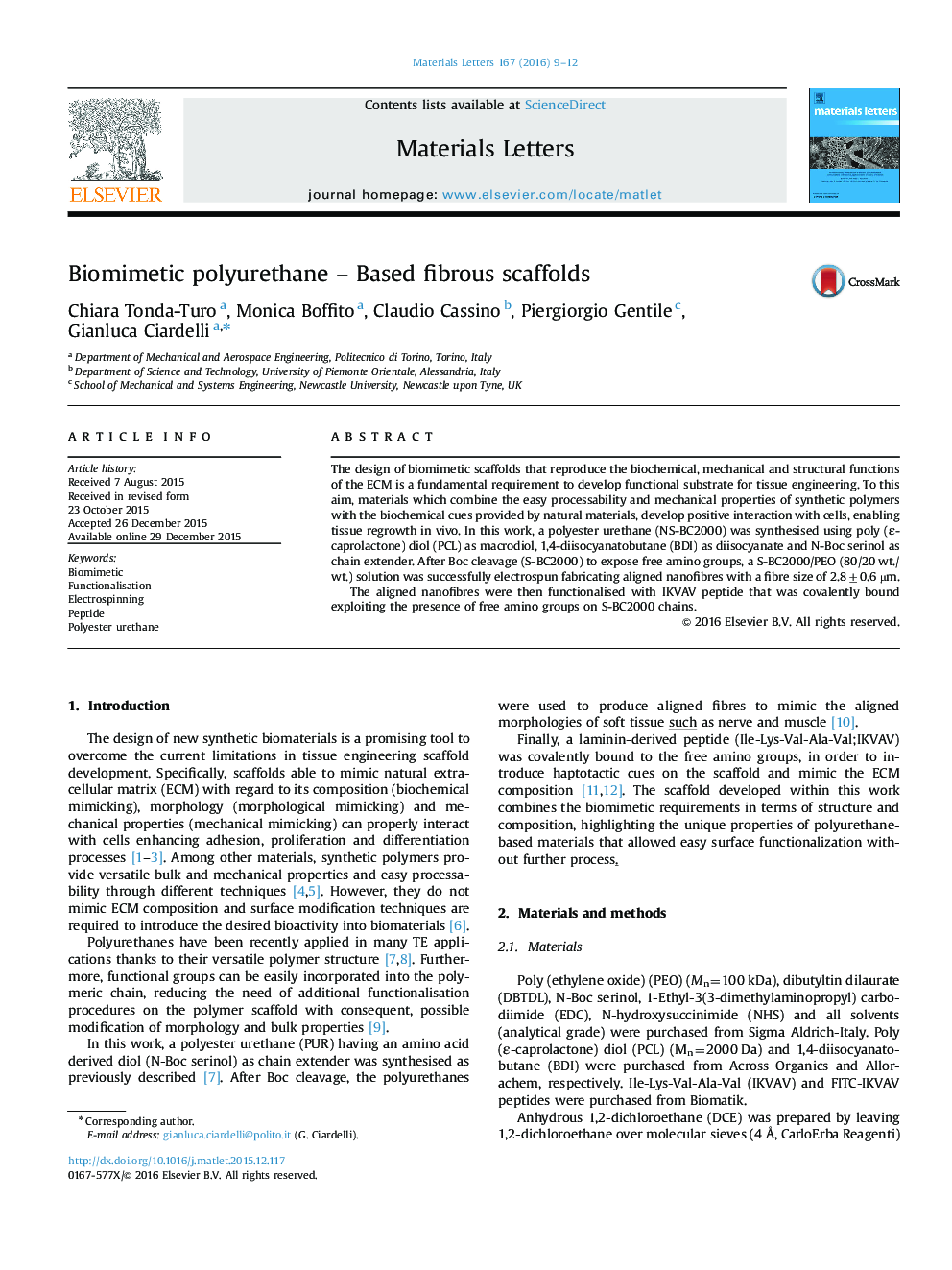| Article ID | Journal | Published Year | Pages | File Type |
|---|---|---|---|---|
| 1642063 | Materials Letters | 2016 | 4 Pages |
•A strategy for peptide functionalisation to the newly designed polymer was described.•A biomimetic construct combining biochemical and morphological cues was developed.•The feasibility of integrating peptides into polyurethane fibres was demonstrated.•A versatile platform for polyurethane-based biomimetic scaffolds was developed.•Amino groups incorporated into the polymer chain avoid additional functionalisation steps.
The design of biomimetic scaffolds that reproduce the biochemical, mechanical and structural functions of the ECM is a fundamental requirement to develop functional substrate for tissue engineering. To this aim, materials which combine the easy processability and mechanical properties of synthetic polymers with the biochemical cues provided by natural materials, develop positive interaction with cells, enabling tissue regrowth in vivo. In this work, a polyester urethane (NS-BC2000) was synthesised using poly (ε-caprolactone) diol (PCL) as macrodiol, 1,4-diisocyanatobutane (BDI) as diisocyanate and N-Boc serinol as chain extender. After Boc cleavage (S-BC2000) to expose free amino groups, a S-BC2000/PEO (80/20 wt./wt.) solution was successfully electrospun fabricating aligned nanofibres with a fibre size of 2.8±0.6 µm.The aligned nanofibres were then functionalised with IKVAV peptide that was covalently bound exploiting the presence of free amino groups on S-BC2000 chains.
